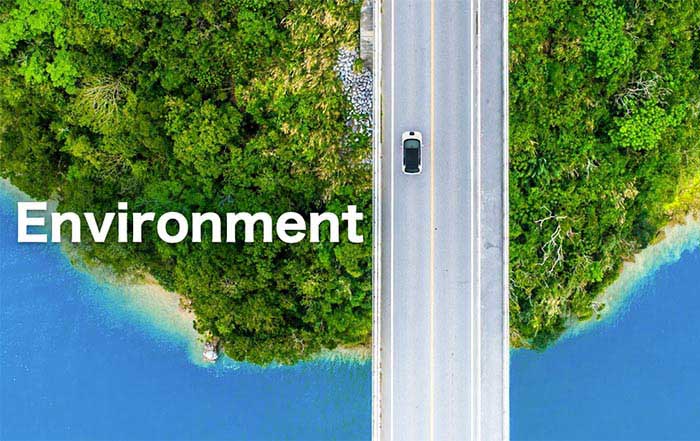One year has passed since Toshihiro Mibe, global CEO of Honda, announced at his inaugural press conference that "Honda will strive to realize carbon neutrality for all products and corporate activities Honda is involved in by 2050." What are Honda's initiatives toward realizing carbon neutrality, considering its broad range of products? And how will Honda approach electrification of its automobile products? The following summarizes Honda's approach to the automobile electrification business presented at a press briefing on April 12, 2022.
The April 2021 CEO inaugural press conference was met with all kinds of feedback, including the astonishment of people who thought Honda is abandoning the internal combustion engine. One year later, in his press briefing, Mibe reviews Honda's initiatives of the past several years, discusses the results of strengthening existing businesses, and new areas that will represent an expansion of Honda's main businesses.
Honda Director, President and Representative Executive, Toshihiro Mibe joined Honda in 1987. After serving as the head of Honda R&D, he assumed his current role in April 2021. In Honda R&D, Mibe was involved in a wide range of research and development, primarily in the field of automobile engines. Officer
Mibe Over the past several years, Honda has been pursuing various initiatives toward the direction to solidify existing businesses and to prepare for new growth, and these initiatives have begun showing positive results in the areas of products, businesses and the development of advanced technologies which will lead us to new growth.
Mibe first spoke of the corporate direction to secure a solid footing for automobile electrification. He cited strong products and strengthening of the business structure as initiatives to solidify existing businesses.
In 2021, the all-new Vezel and all-new Civic were very well received and, in the meantime, the company began adopting Honda Architecture that enables layout integration and component commonization for its vehicle platforms. Streamlining took place globally, reducing the total number of variations at the trim and option level for each of the global models. Mibe believes that the improvement of the business structure will generate investments in electrification and preparation for new growth.
Mibe The three new areas, eVTOL, avatar robotics and challenges in the field of space technology, all require core technologies that are an extension of technologies Honda amassed in its existing businesses, and I believe these three areas are an expansion of our original business as a mobility company.
eVTOL realizes comfortable intercity mobility. Avatar robot enables virtual mobility. Challenges in the field of space technology include circulative renewable energy systems that enable human activities on the Moon and small rockets. As with motorcycles and automobiles, these three new areas will be pursued to create more free time for people, increase the time and space where people take active roles, and to remove constraints on people's freedom of mobility. Honda not only aims to expand the range of human living and activities, but to become the power to change society.
Carbon neutrality by 2050. Why would Honda, which has developed combustion engines throughout its existence, set such a goal and aim for electrification? Honda believes that it is Honda's responsibility as the world's leading power unit manufacturer.
Mibe Honda is a mobility company providing a wide range of products from motorcycles, automobiles and power products, to outboard motors and aircraft, which in total, makes Honda the world's largest power unit manufacturer, with annual sales of approximately 30 million units.
Mibe To continue serving as a source of power that supports people around the world who are trying to do things based on their own initiative, Honda strives to realize "the joy and freedom of mobility," and we want to do it by seeking "zero environmental footprint.
Mibe In order to do that, we will work toward carbon neutrality of our mobility products and their power source – the power unit.
Electrification is often considered the foremost carbon neutrality initiative for automakers, but for Honda, which also offers other forms of mobility products such as motorcycles, aircraft and outboard motors, this is not the case. Mibe emphasizes that "we need to take a multifaceted and multidimensional approach, not the mere replacement of engines with batteries."
Mibe We must take into consideration the diverse range of mobility products we offer, the diverse ways our customers use our products and their living environment, and also the availability of renewable energy in their markets. Moreover, we have to see things from the viewpoint of the product lifecycle, and we also have to have the perspective of how we can contribute to the total amount of energy and energy efficiency for society as a whole.
To accelerate the realization of its vision, Honda made organizational changes in April 2022.
Electrified products and services, battery, energy, Mobile Power Pack, hydrogen and software/connected technologies that connect all core areas have been spun off from their respective product-based business operations and combined under the newly created Business Development Operations. Honda will budget approximately 8 trillion yen for its research and development expenses over the next ten years. For two key target areas, electrification and software, Honda plans to devote approximately 5 trillion yen over the next 10 years, which will include investments. Shinji Aoyama, in charge of the new Business Development Operations, provided the roadmap to automobile electrification.

